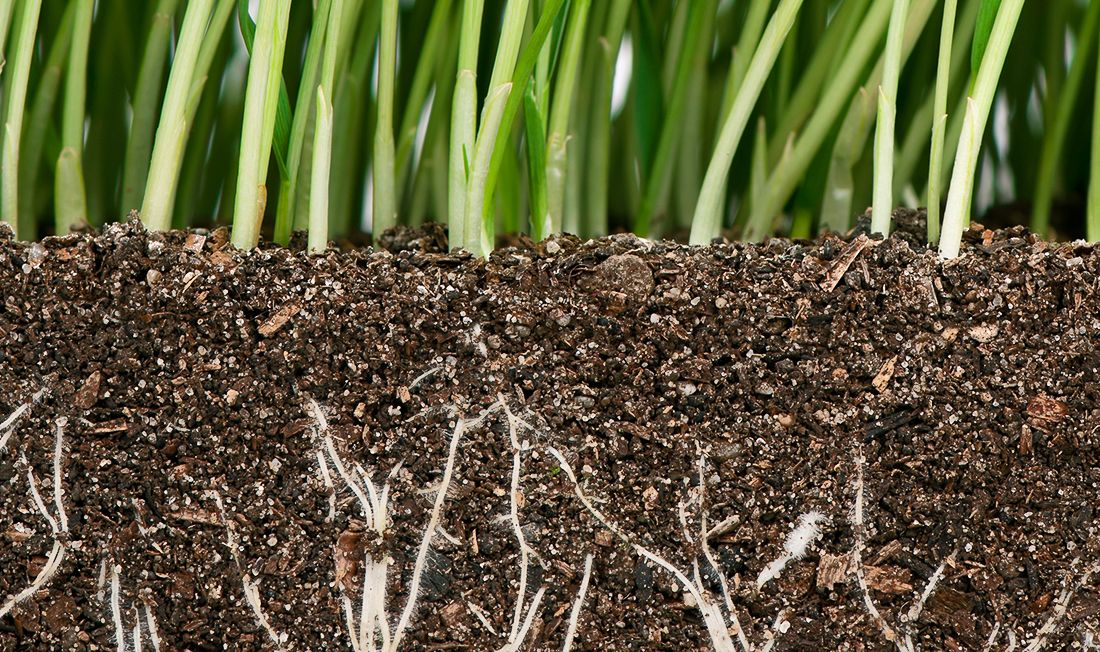Sometimes, there’s nothing like indulging in a greasy fast food burger with a side of french fries. If you’re not careful, the convenience and immediate satisfaction of whipping into the drive-through lane and picking up a full meal for a bargain price can turn into a downright addiction. Unfortunately, the long-term repercussions of regular savory value meals will likely have quicker and more substantial health effects compared to cooking the same meals at home.
Fertilizers can work in the same fashion. All fertilizers are not created equal, and just like that #5 with fries and a soda, overuse of the wrong products, combined with a lack of water, can leave your soil bloated, dehydrated, and craving nutrients.

Salt Accumulation in Soil
While fertilizer analyses, or the numbers on a fertilizer bag, may look the same, there are subsurface factors that need to be managed. One of the most adverse soil health effects of fertilizer misuse is the potential buildup of salts in your soil that can leave your lawn weak and dehydrated. The term “salt” is generally associated with sodium chloride or table salt. Sodium can accumulate in the soil, however, the blanket term salts is used to describe an ion that both carries a positive charge and a negative charge. As these ions accumulate in the soil, they can increase the osmotic potential of the soil. This means that the soil can begin to extract water from the plant instead of the plant extracting water from the soil. Seedlings are especially sensitive to salt stress, so high salinity can be detrimental during lawn establishment.

Types of Salts in Soil
Nearly all fertilizer materials contain salts. Examples are potassium chloride, urea, and various forms of phosphate, but even ingredients such as lime (calcium carbonate) and gypsum (calcium sulfate), which are often more heavily applied, are considered salts. With that being said, not all salts are created equal. A fertilizer salt index can help you determine the concentration of salts that you may be applying to your lawn during your applications. A look at this chart may also explain why getting more “bang for your buck” when applying fertilizers, such as choosing 60% potassium in the form of potassium chloride vs. 25% potassium in the form of potassium thiosulfate at the same price, isn't always as much of a value as it may seem.

Saline Vs. Sodic Soils
To further complicate matters, there are two types of “salty” soils. Saline soils contain buildups of the types of salts mentioned above, while sodic soils contain high concentrations of sodium. Saline soils are permeable and excess salts can be flushed by rainwater, or irrigation water (as long as your irrigation water doesn’t also contain high salt concentrations). White crusting at the soil surface is a trademark of saline soils. Sodic soils are primarily found in arid and semi-arid regions of the Southwest United States. Sodium attached to roots and clay particles cannot be leached with water, so gypsum applications are necessary to remove them from these “exchange sites” to the soil solution where they can be flushed.

The Importance of Soil Tests
Managing soil salinity doesn’t have to be complicated. First, a complete soil fertility test can provide an initial indication of salt levels in your soil. An electrical conductivity (EC) value >4 indicates saline soil, while an exchangeable sodium percentage (ESP) value >15 indicates sodic soil. Shallow, frequent irrigation can cause salts to accumulate in the root zone, so water deeply and infrequently to consistently flush your soil.
If you suspect your irrigation water is high in salts, consider an irrigation water test. If you do have sodic soil, which is far more rare, apply gypsum, irrigate accordingly, and monitor your soil tests for progression.
If you don’t have irrigation, consider grasses with a higher salt tolerance such as zoysia, bermudagrass, or seashore paspalum. Finally, stick to a consistent fertilizer regimen and adhere to label instructions to avoid overapplication.









